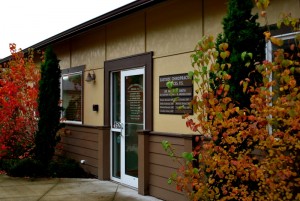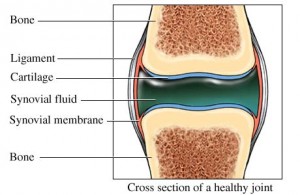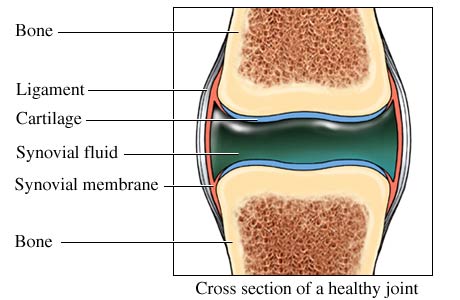Submitted by Dr. Murray Smith for Eastside Chiropractic

Seems like only yesterday I wrote an article about being able to predict the weather with your old, icky joints. In fact, it was 2007 when I wrote the first article. I’d been getting lit up by some of my medical brethren about promoting the old wives’ tale of being able to predict the weather with that old arthritic knee. I had grown tired of the beatings and decided to research the medical literature to see if I could find evidence of the connection and to my surprise found hundreds of scientific papers that made the connection between the changes in the barometric pressure and joint pain.
Now, 7 years later a Google search for barometric pressure and joint pain comes back with 52,000 results in .37 seconds. In fact, the first result is from WebMD. And a search of the medical literature now finds 19,200 results in .08 seconds. And now you can check out the Aches and Pains Forecast from The Weather Channel. Seems Murray wasn’t so goofy after all. Just ahead of his time. Vindication is cool but let’s talk icky joints.
Let’s start with the joint. A joint is essentially two adjoining bones held together with ligaments that confine a small amount of synovial fluid between the bones. One purpose of the fluid is to keep the bones just slightly apart so in a sense it’s causing a force that pushes outward. The ligaments and muscles job is to keep the bones together so they are causing a force inward. Embedded within the ligaments (the joint capsule) are nerve endings that sense movement, position and some that sense pain.
Now we’ll take a look at a barometer/barometric pressure. Barometric pressure is simply the weight of the atmosphere pushing down on us. Yup, air has weight. The higher the barometric pressure the greater the weight bearing down on us. An aneroid barometer is usually a small, flexible metal box called an aneroid cell or capsule. Any expansion or contraction of the cell/capsule drives mechanical levers on the outside of the capsule such that the tiny movements of the capsule are amplified and displayed on the face of the aneroid barometer.
 Now think of the mechanical levers on the outside of the aneroid cell as if they are those pesky nerve endings in the joint capsule. If the barometric pressure rises the capsule becomes slightly collapsed and the nerve endings relax. But if the barometer drops the capsule expands, stretching the nerve endings. Healthy, mobile joints and nerves can readily expand and contract a little without difficulty but if you are cursed with a joint that is irritated, scarred, stuck or degenerating (an icky joint) the nerve endings are probably a little peeved anyway and stretching them triggers pain. Here in God’s country rapid changes in the barometer are usually a drop in pressure not a quick rise. Therefore, when the barometer makes its quick drop like we are blessed with here especially in the fall and winter, those of you with icky joints have built in weather stations. Whew!
Now think of the mechanical levers on the outside of the aneroid cell as if they are those pesky nerve endings in the joint capsule. If the barometric pressure rises the capsule becomes slightly collapsed and the nerve endings relax. But if the barometer drops the capsule expands, stretching the nerve endings. Healthy, mobile joints and nerves can readily expand and contract a little without difficulty but if you are cursed with a joint that is irritated, scarred, stuck or degenerating (an icky joint) the nerve endings are probably a little peeved anyway and stretching them triggers pain. Here in God’s country rapid changes in the barometer are usually a drop in pressure not a quick rise. Therefore, when the barometer makes its quick drop like we are blessed with here especially in the fall and winter, those of you with icky joints have built in weather stations. Whew!
Fine! “What can I do to ease my icky joints?” Glad you asked.
- First and foremost, be mobile. Movement can temper that peeved joint and lessen the pain. Yoga, regular stretching, chiropractic care and massage can all aid in your quest to be more mobile.
- Stay warm and don’t get chilled! When you get chilled you shiver. Shivering is a bodily function to feeling cold or a response to hypothermia. It’s your body making muscles shake or shudder which burns calories and serves to increase body temperature. The contraction of muscle can put unbalanced pressure on a joint and start upsetting the normal movement of the joint.
- Weight Loss. It doesn’t require a PhD in rocket science to understand that extra weight on joints will aggravate them.
- Sleep. We heal and recover from the small repetitive owies of everyday life in large part during sleep. If you don’t sleep, you don’t recover from yesterday’s overexertion. Pile several days in a row up and it’s like having a single larger injury to that cranky joint.
- Topicals/Capsaicin. What’s cool about capsaicin is that it can deplete local nerve tissue of substance P (a neurotransmitter linked to pain). Other topicals that don’t have capsaicin can be helpful as well, I just happen to prefer one with capsaicin.
- Epsom Salt Baths. It just hardly gets any better than an Epsom salt bath for joint and muscle pain. Epsom salts are mostly a mineral compound of magnesium and sulfates and can ease muscle pain and relax muscle. Taking the time to relax during the bath has its own benefits for pain relief. And the hot bath ain’t bad either
- Supplements. There are countless numbers of supplements that can reduce inflammation. Most recent has been the use of turmeric. Bromelain isn’t bad either but they need to be taken 2-3 x/day for best results.
- Move to Arizona or Florida. More steady barometer and warmer. Nuff said.
I love home therapies and sometimes the low-tech treatments, as I’ve listed above, are the better choices for treatment of an icky joint. And don’t underestimate their effectiveness. High-tech and more invasive treatments are just that. More invasive and come with more complications than the low-tech therapies. And for everything I’ve listed above they don’t require a prescription and can be performed at home. Should you have any questions or concerns about icky joints, ask any of the chiropractors in the office.
Eastside Chiropractic
1526 Bishop Road SW
Tumwater, WA 98512
360-459-9000 or request an appointment here


















































